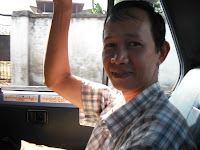/ KUCINTA SETIA
Updated 20 September 2020
Coming to Yangon, it is necessary to visit Shwedagon Pagoda, the important symbol of Yangon and the stunning symbol of Myanmar unity. It is the most noticable ancient architecture noticed from four sides of the city besides the tallest commercial building, the twenty-storied Sakura Tower that overlooks Shwedagon Pagoda and the environs.
Shwedagon Pagoda, where the relics of four Buddhas were enshrined, was built over 2,500 years. Visitors that did not step into this place would think that it is only one pagoda structure. In fact, Shwedagon Pagoda is the largest pagoda complex or temple museum of Southeast Asia. Besides the main Shwedagon Pagoda that stands out stunning at nights, it has an Indian temple, a Myanmar-style Chinese pagoda built by the local Chinese community and other pagodas of other Myanmar races.
National races living in Myanmar comprise Bamar (the majority), Kachin, Karen, Kayar, Chin, Mon, Rakhine and Shan who speak in their own languages and English and have their own traditional attires and ways of dressing. Majority of people are Buddhists while there are also Christians.
 For instance, the Chin tribe who live in Chin State bordering India, Myuangmya and Yangon are Christians belonging to the Seventh-Day Adventist denomination. We believe that the first day of the week is Sunday and the week ends on Saturday. We rest from labour on Saturday (Sabbath) and look forward to Jesus Christ's Second Coming.
For instance, the Chin tribe who live in Chin State bordering India, Myuangmya and Yangon are Christians belonging to the Seventh-Day Adventist denomination. We believe that the first day of the week is Sunday and the week ends on Saturday. We rest from labour on Saturday (Sabbath) and look forward to Jesus Christ's Second Coming.It is best to visit Shwedagon Pagoda in Yangon, a city with a population of five million, in November and December when it is winter. It is also less hot but it is rainy from May to October. Yangon records very high temperatures and sometimes dry spells from January to April.
Visitors coming to Shwedagon Pagoda during the dry season of 2014 are likely to see the reknown Dhammazedi Bell restored to glory here in early 2014 if it were salvaged successfully from the confluence of Yangon and Bago Rivers in a joint-effort led by Singaporean company SD Mark International LLP and the Historical Research Department of the Ministry of Culture.
Dhammazedi Bell and its relation with Shwedagon Pagoda
Dhammazedi Bell, made by highly skilled Mon craftsmen, is covered in letters from top to bottom that relate Myanmar's ancient history. It was cast in 1476 by King Dhammazedi, the nineth king of the Mon Dynasty based in Hanthawaddy (present-day Bago), and installed in Shwedagon Pagoda as he felt guilty about taking land from the Shwedagon Pagoda precinct. It remained there until the early 1600s, when Portuguese mercenary Filipe de Brito y Nicote located it in order to melt it down and cast cannons for his settlement at Syriam, now Than Lyin. En-route to Syriam, it plunged into the waters at the confluence of the Yangon and Bago Rivers, never to be salvaged successfully.














No comments:
Post a Comment